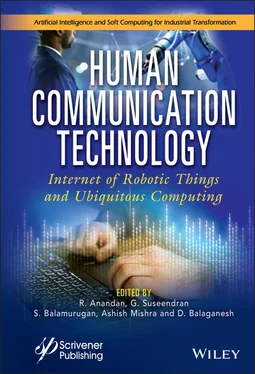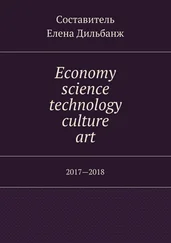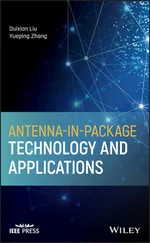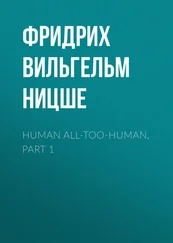Human Communication Technology
Здесь есть возможность читать онлайн «Human Communication Technology» — ознакомительный отрывок электронной книги совершенно бесплатно, а после прочтения отрывка купить полную версию. В некоторых случаях можно слушать аудио, скачать через торрент в формате fb2 и присутствует краткое содержание. Жанр: unrecognised, на английском языке. Описание произведения, (предисловие) а так же отзывы посетителей доступны на портале библиотеки ЛибКат.
- Название:Human Communication Technology
- Автор:
- Жанр:
- Год:неизвестен
- ISBN:нет данных
- Рейтинг книги:5 / 5. Голосов: 1
-
Избранное:Добавить в избранное
- Отзывы:
-
Ваша оценка:
- 100
- 1
- 2
- 3
- 4
- 5
Human Communication Technology: краткое содержание, описание и аннотация
Предлагаем к чтению аннотацию, описание, краткое содержание или предисловие (зависит от того, что написал сам автор книги «Human Communication Technology»). Если вы не нашли необходимую информацию о книге — напишите в комментариях, мы постараемся отыскать её.
A unique book explaining how perception, location, communication, cognition, computation, networking, propulsion, integration of federated Internet of Robotic Things (IoRT) and digital platforms are important components of new-generation IoRT applications through continuous, real-time interaction with the world.
Audience
Human Communication Technology — читать онлайн ознакомительный отрывок
Ниже представлен текст книги, разбитый по страницам. Система сохранения места последней прочитанной страницы, позволяет с удобством читать онлайн бесплатно книгу «Human Communication Technology», без необходимости каждый раз заново искать на чём Вы остановились. Поставьте закладку, и сможете в любой момент перейти на страницу, на которой закончили чтение.
Интервал:
Закладка:
Table of Contents
1 Cover
2 Title page
3 Copyright
4 Preface
5 1 Internet of Robotic Things: A New Architecture and Platform 1.1 Introduction 1.2 Platforms 1.3 Conclusion 1.4 Future Work References
6 2 Brain–Computer Interface Using Electroencephalographic Signals for the Internet of Robotic Things 2.1 Introduction 2.2 Electroencephalography Signal Acquisition Methods 2.3 Electroencephalography Signal-Based BCI 2.4 IoRT-Based Hardware for BCI 2.5 Software Setup for IoRT 2.6 Results and Discussions 2.7 Conclusion References
7 3 Automated Verification and Validation of IoRT Systems 3.1 Introduction 3.2 Program Analysis of IoRT Applications 3.3 Formal Verification of IoRT Systems 3.4 Validation of IoRT Systems 3.5 Automated Validation References
8 4 Light Fidelity (Li-Fi) Technology: The Future Man–Machine–Machine Interaction Medium 4.1 Introduction 4.2 Literature Survey 4.3 Light Fidelity Technology 4.4 Li-Fi Applications in Real Word Scenario 4.5 Conclusion References
9 5 Healthcare Management-Predictive Analysis (IoRT) 5.1 Introduction 5.2 Related Work 5.3 Fuzzy Time Interval Sequential Pattern (FTISPAM) 5.4 Detection of Congestive Heart Failure Using Automatic Classifier 5.5 Experimental Analysis 5.6 Conclusion References
10 6 Multimodal Context-Sensitive Human Communication Interaction System Using Artificial Intelligence-Based Human-Centered Computing 6.1 Introduction 6.2 Literature Survey 6.3 Proposed Model 6.4 Experimental Results 6.5 Conclusion 6.6 Future Scope References
11 7 AI, Planning and Control Algorithms for IoRT Systems 7.1 Introduction 7.2 General Architecture of IoRT 7.3 Artificial Intelligence in IoRT Systems 7.4 Control Algorithms and Procedures for IoRT Systems 7.5 Application of IoRT in Different Fields References
12 8 Enhancements in Communication Protocols That Powered IoRT 8.1 Introduction 8.2 IoRT Communication Architecture 8.3 Bridging Robotics and IoT 8.4 Robot as a Node in IoT 8.5 Robots as Edge Device in IoT 8.6 Challenges and Research Solutions 8.7 Open Platforms for IoRT Applications 8.8 Industrial Drive for Interoperability 8.9 Conclusion References
13 9 Real Time Hazardous Gas Classification and Management System Using Artificial Neural Networks 9.1 Introduction 9.2 Existing Methodology 9.3 Proposed Methodology 9.4 Hardware & Software Requirements 9.5 Experimental Setup 9.6 Results and Discussion 9.7 Conclusion and Future Work References
14 10 Hierarchical Elitism GSO Algorithm For Pattern Recognition 10.1 Introduction 10.2 Related Works 10.3 Methodology 10.4 Experimental Setup 10.5 Discussion 10.6 Conclusion References
15 11 Multidimensional Survey of Machine Learning Application in IoT (Internet of Things) 11.1 Machine Learning—An Introduction 11.2 Internet of Things 11.3 ML in IoT 11.4 Literature Review 11.5 Different Machine Learning Algorithm 11.6 Internet of Things in Different Frameworks 11.7 Smart Cities 11.8 Smart Transportation 11.9 Application of Research 11.10 Machine Learning for IoT Security 11.11 Conclusion References
16 12 IoT-Based Bias Analysis in Acoustic Feedback Using Time-Variant Adaptive Algorithm in Hearing Aids 12.1 Introduction 12.2 Existence of Acoustic Feedback 12.3 Analysis of Acoustic Feedback 12.4 Filtering of Signals 12.5 Adaptive Algorithms 12.6 Simulation 12.7 Performance Evaluation 12.8 Conclusions References
17 13 Internet of Things Platform for Smart Farming 13.1 Introduction 13.2 History 13.3 Electronic Terminologies 13.4 IoT Cloud Architecture 13.5 Components of IoT 13.6 IoT-Based Crop Management System 13.7 Future Prospects 13.8 Conclusion References
18 14 Scrutinizing the Level of Awareness on Green Computing Practices in Combating Covid-19 at Institute of Health Science-Gaborone 14.1 Introduction 14.2 Research Methodology 14.3 Analysis of Data and Presentation 14.4 Recommendations 14.5 Conclusion References
19 15 Detailed Analysis of Medical IoT Using Wireless Body Sensor Network and Application of IoT in Healthcare 15.1 Introduction 15.2 History of IoT 15.3 Internet of Objects 15.4 Applications of IoT 15.5 IoT in Healthcare of Human Beings 15.6 Telemedicine Through a Speech-Based Query System 15.7 Conclusion 15.8 Sensors 15.9 Design of Sensor Nodes 15.10 Applications of BSNs 15.11 Conclusions 15.12 Introduction 15.13 Body-to-Body Network Concept 15.14 Conclusions References
20 16 DCMM: A Data Capture and Risk Management for Wireless Sensing Using IoT Platform 16.1 Introduction 16.2 Background 16.3 Architecture 16.4 Implementation 16.5 Results and Discussions 16.6 Conclusion References
21 Index
22 Also of Interest
23 End User License Agreement
Guide
1 Cover
2 Table of Contents
3 Title page
4 Copyright
5 Preface
6 Begin Reading
7 Index
8 Also of Interest
9 End User License Agreement
List of Illustrations
1 Chapter 1 Figure 1.1 Description of the IoRT innovations. Figure 1.2 Conceptual model of IoRT Architecture. Figure 1.3 Protocol stacks of IoT. Figure 1.4 Platform of IoRT. Figure 1.5 Service oriented test platform. Figure 1.6 Illustrates the connection establishment. Figure 1.7 Data analysis.
2 Chapter 2 Figure 2.1 Foremost branches of IoRT. Figure 2.2 Process flow of electromyography signal acquisition. Figure 2.3 Neurosky electroencephalograph headset available in Market. Figure 2.4 Electrode positioning of brain for extracting the electroencephalogra... Figure 2.5 Categories of feature extraction techniques. Figure 2.6 The flow of data speed, client connection and data transfer of mobile... Figure 2.7 The logical flow of brain–computer interface system software. Figure 2.8 GUI of brain–computer interface based software.
3 Chapter 3 Figure 3.1 Sequence of states in IoRT systems. Figure 3.2 Model checking approach. Figure 3.3 PRISM model checking overview. Figure 3.4 UPPAAL basic structure. Figure 3.5 SPIN overview. Figure 3.6 Automated theorem proving and logic. Figure 3.7 Higher level view of alt-ergo. Figure 3.8 CodeSonar overview. Figure 3.9 IoRT Validation key concerns. Figure 3.10 Approach to IoRT testing framework. Figure 3.11 Automated test frameworks types. Figure 3.12 Modular driven framework. Figure 3.13 Library architecture. Figure 3.14 Data driven framework. Figure 3.15 Keyboard driven framework. Figure 3.16 Hybrid automation framework. Figure 3.17 BDD automation framework. Figure 3.18 IoRT testing. Figure 3.19 Priority of testing mode. Figure 3.20 Automated validation process.Figure 3.21 Key strategies for IoRT security.
4 Chapter 4Figure 4.1 Working principle of Li-Fi.Figure 4.2 M2M communication system.Figure 4.3 Basic building blocks of Li-Fi & its applications.Figure 4.4 Arduino Uno development board.Figure 4.5 Li-Fi transmitter circuit.Figure 4.6 Li-Fi receiver circuit.Figure 4.7 Li-Fi navigation system for blind people.Figure 4.8 Vehicle to vehicle communication using Li-Fi.Figure 4.9 Li-Fi at ICU room.
5 Chapter 5Figure 5.1 Cross-over representation.Figure 5.2 Representation of mutation process.Figure 5.3 Robot interaction for disease prediction—belief network.Figure 5.4 Data collection.Figure 5.5 HRV measures prediction.Figure 5.6 Attribute selection.Figure 5.7 Graphical representation of Bayesian belief network model.Figure 5.8 Final model tree for the combination of attributes.Figure 5.9 Final output of in terms of performance measures with classified resu...
6 Chapter 6Figure 6.1 Human-centric computing.Figure 6.2 Proposed methodology.Figure 6.3 Data partition in the network.Figure 6.4 The output is predicted after attaching weights to the subnetworks.Figure 6.5 Multimodal data performance.Figure 6.6 Performance metrics.Figure 6.7 PPV and NPV performance.Figure 6.8 Proposed methodology overall performance.
Читать дальшеИнтервал:
Закладка:
Похожие книги на «Human Communication Technology»
Представляем Вашему вниманию похожие книги на «Human Communication Technology» списком для выбора. Мы отобрали схожую по названию и смыслу литературу в надежде предоставить читателям больше вариантов отыскать новые, интересные, ещё непрочитанные произведения.
Обсуждение, отзывы о книге «Human Communication Technology» и просто собственные мнения читателей. Оставьте ваши комментарии, напишите, что Вы думаете о произведении, его смысле или главных героях. Укажите что конкретно понравилось, а что нет, и почему Вы так считаете.











